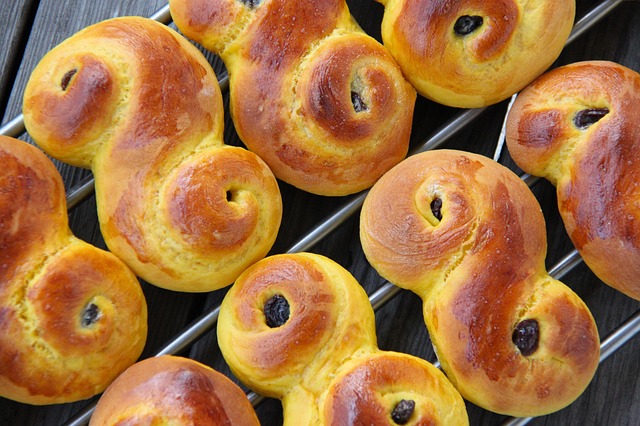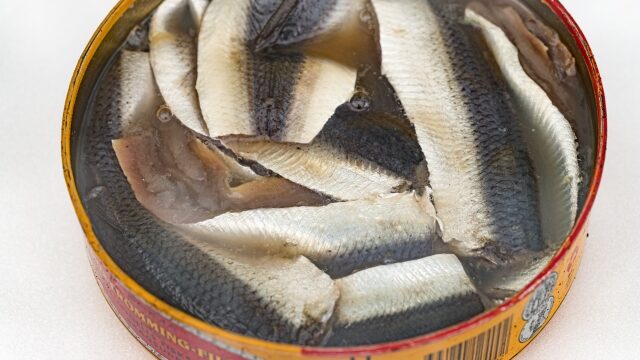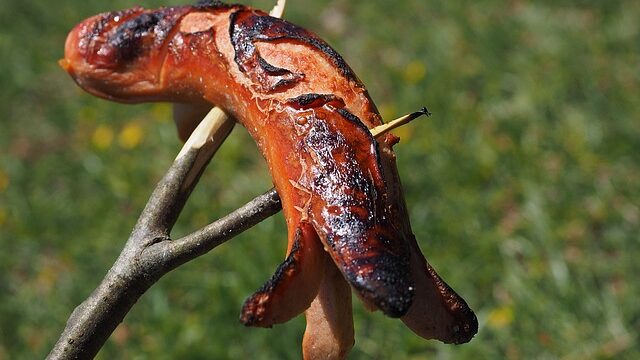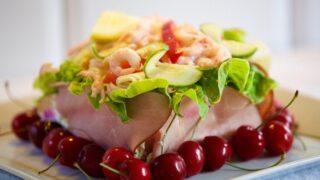In Sweden, there is a bread called lussekatt that is curled into an S shape and has an eye-catching yellow appearance.
The yellow color of lussekatt is due to the pigment of saffron, which is considered one of the finest spices.
The exotic aroma unique to saffron is also one of its charms.
In this article, I would like to explain in detail about lussekatt, a bread with saffron that is well-loved in Sweden.
Lussekatt with yellow S-shaped appearance

Lussekatt(Lussekatter) is a traditional Swedish sweet bread.
Lussekatt is characterized by its yellow dough kneaded with the spice saffron and its unique S-shape.
The dough also contains butter and milk. The sweetness combined with the rich aroma of saffron makes it very easy to eat.
The surface of the lussekatt can be topped with raisins as a single point or sprinkled with granulated sugar like powdered snow.
In addition to the common S-shape, lussekatt comes in a variety of shapes, depending on the household. There are star shapes, round shapes, and even cute ones that resemble animals.
In Sweden, lussekatt is eaten for breakfast, lunch, and even as a snack.
The most expensive spice, saffron
The yellow color of lussekatt is produced by a spice called saffron.
Saffron is native to the Mediterranean and is a member of the iris family that blooms in the fall.
The three divided stamens on the flowering saffron flower are used as a spice.
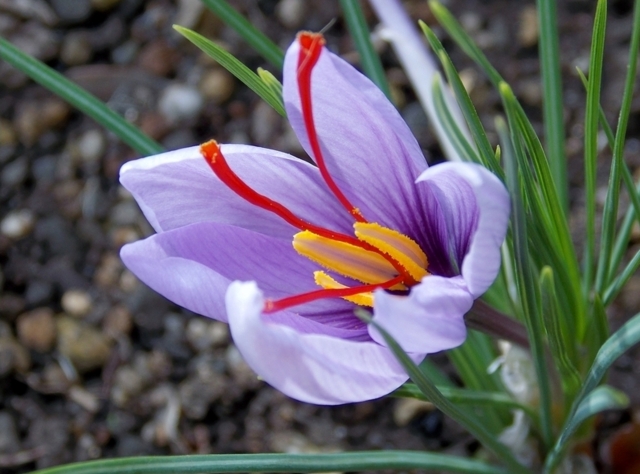
The Saffron looks like a small red thread.
Did you know that saffron frequently appears in our usual dishes?
For example, the saffron rice served in Indian curry restaurants and the yellow rice in Spanish paella are due to saffron.
Saffron contains a water-soluble pigment called crocin.
When soaked in water, the golden pigment dissolves.
This is why it turns yellow when cooked with rice.
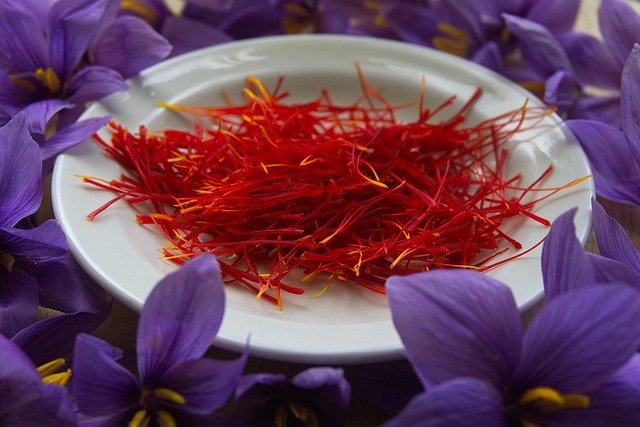
Saffron has a long history of use as a dye for its yellow pigment in many parts of the world.
It is said that saffron first came to Sweden around the 19th century.
The yellow pigment is not the only feature of saffron. In fact, it is known as the most expensive spice of all spices.
Only three saffron stamens used as a spice can be harvested from each flower.
To obtain 10 grams of saffron, it takes more than 1,500 saffron flowers.
Furthermore, the stamens must be picked delicately to avoid damaging them, so harvesting is done entirely by hand.
For this reason, saffron is considered one of the finest spices due to the time and effort required to harvest it and its rarity.
Swedish for “Lucia’s cat”
The name Lussekatt is Swedish for “Lucia’s cat”.
There are many theories as to why the name “Lucia’s Cat” is derived from the name.
One reason is that the cute round design reminds one of a cat’s tail. Indeed, if we look closely at the lussekatt, the S-shape does look like a tail.
Another, a slightly scarier theory is that it is a remnant of the ancient practice in Nordic countries of sacrificing animals, such as cats, to ward off evil spirits that appear in the winter.

The most popular theory, which will be discussed in more detail later, is that lussekatt originated as bread distributed by a Christian saint named “St. Lucia.”
Since ancient times, the devil and cats have had a deep connection in European Germany, where the bread distributed by the devil was called “the devil’s cat.”
This tradition is said to have spread to Sweden in Nordic countries, and the bread distributed by St. Lucia became popular in Sweden as “Lucia’s cat.”
What is Saint Lucy’s Day in Sweden?
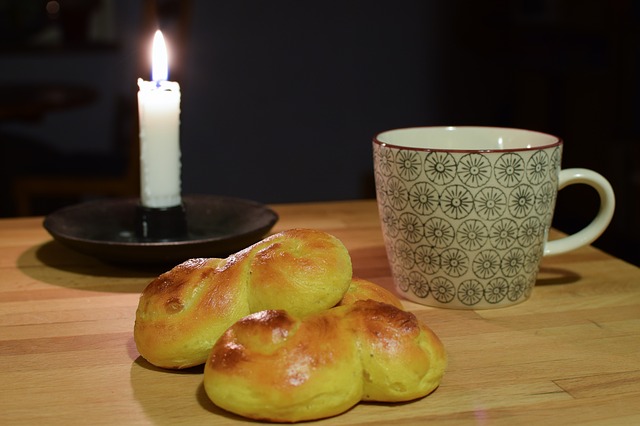
In Sweden, an event called “Saint Lucy’s Day” is held on December 13, just before Christmas.
Saint Lucy’s Day is a festival to pray to Saint Lucia during the winter solstice, the longest night of the year in Nordic countries, to wish for a warm spring in the coming year.
Lucia is a Christian saint and is known in Sweden as the patron saint for bringing light to the darkness of winter.
And lussekatt is also eaten throughout Sweden, especially between this Saint Lucy’s Day and December 25, the day of Christmas.
The Lucia Procession is a typical event of Saint Lucy’s Day.
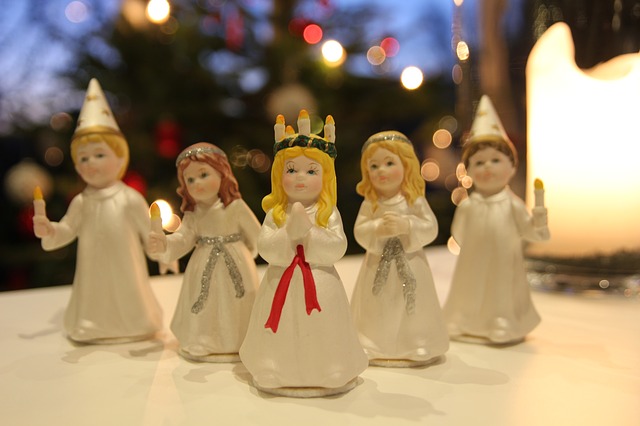
The Lucia Procession is an event in which children march through the streets and churches of Sweden, led by a girl chosen to play the role of Lucia while singing the song “Santa Lucia.”
The girl who plays Lucia walks in the front, wearing a white costume and a crown with candles attached.
A boy dressed as a stargazer, holding a candle and a star-shaped model, and a girl as Lucia’s attendant follow behind.
At the end of the event, the boys and girls are rewarded with warm lussekatt as a reward for their hard work in the cold Swedish weather.
Conclusion
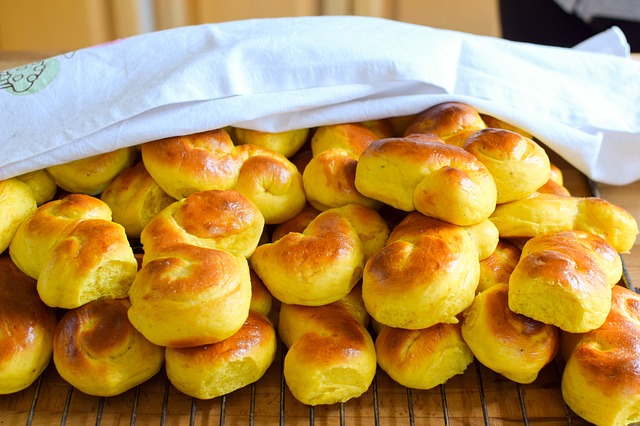
Lussekatt is a must-have bread during the Swedish Christmas season.
The bright yellow color and aroma of saffron are very beautiful.
One bite will warm your frozen body from the inside out during the Nordic countries’ winters.
The recipe is simple and you can even bake it at home by adding saffron to the dough.
Eating lussekatt for breakfast with a freshly brewed cup of coffee is truly a moment of bliss.
